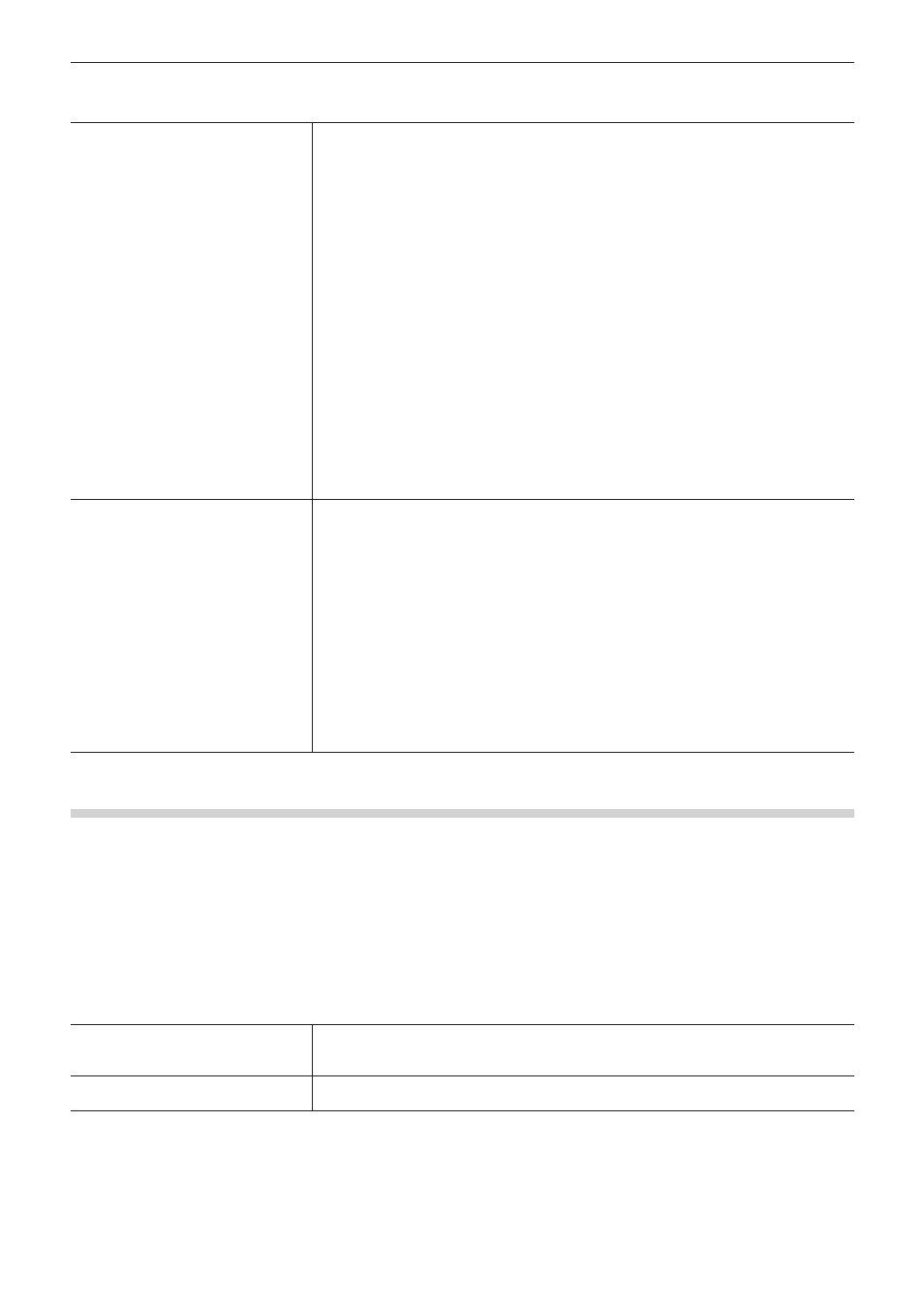Exporting a still image – Grass Valley EDIUS Pro v.7.4 Reference Manual User Manual
Page 403

Chapter 10 Export of Edited Contents — Exporting in File Formats
403
r
[Extended Settings] tab
[Video settings]
[Field Order]
For interlace, a field order can be selected.
[Chroma Format]
Select a YUV pixel format from the list.
[Profile & Level]
Select a profile & level. If [Chroma Format] is [4:2:0] and [4:2:2], the profile will be set to Main
Profile and 422Profile, respectively. The level for SD image quality will be Main Level, and
the level for HD image quality will be High Level. The profile & level changes according to the
format selected in [Chroma Format].
[GOP Structure]
For MPEG, a certain number of frames is considered as a group, and operations such as
compression/enlargement and cut editing are performed on a GOP basis. A GOP comprises
“I frame”, “P frame” and “B frame”. The I frame allows images to be reproduced independently,
the P frame is for recording and reproducing only the differences with the preceding image,
and the B frame reproduces images from the differences in the preceding and following
images. Select I, P and B frame patterns of the GOP from the list. Normally, select [IBBP].
[I-Frame Only] is comprised of only I-pictures. Editing is made easier, but the amount of data
increases in size.
[Picture count]
Set the number of frames included in a group.
[Closed GOP]
Check this item to complete information within each GOP. Although the amount of data
increases, the video can be re-edited using software that supports GOP-based editing.
Normally, leave this item unchecked.
[Audio settings]
[Emphasis]
Select from the list for high-frequency compensation that saves while emphasizing the high
range. With [None], there is no high-frequency compensation.[50/15 us] is an emphasis
setting employed by some audio CDs, etc. [CCITT J.17] is a telecommunications standard
recommended by CCITT.
[Protection]
The “protection_bit” indicates whether redundancy is added to an audio stream in order to
make error detection and correction possible. Check this item to change it to “1”, indicating that
redundancy is being added. Uncheck this item to change it to “0”, indicating that redundancy is
not being added.
[Original Flag]
Check this item to change the “original_copy” bit to “1”, indicating the original copy. If it is
unchecked, it becomes “0”, indicating a duplication.
[Copyright Flag]
Check this item to change the “copyright” bit to “1”, indicating that the copyright is protected. If
it is unchecked, it becomes “0”, indicating there is no copyright.
Exporting a Still Image
Export all frames between In and Out points on the timeline as still image files.
1)
Click [Other] in the [Print to File] dialog box category tree.
f
“Exporting Files with an Exporter” (w page 392)
2)
Click [Still Image], and click [Export].
3)
Specify a file name and export destination, and select the export format.
f
A sequential number will be added based on the file name entered.
[Advanced]
Change the aspect ratio correction or export field settings. The settings for [Still Image] in
[System Settings] will be the initial values.
[Save between In/Out in sequential
files]
Export all frames between In and Out points on the timeline as still image files.
2
f
For example, if “Still1” is entered as the file name, the exported image files will become “Still1”/“Still2”/“Still3”... and if “Still5” is entered as
the file name, the exported image files will become “Still5”/“Still6”/“Still7”..., etc. If a number is not added at the end of the file name, an
8-digit sequential number will be added automatically.
